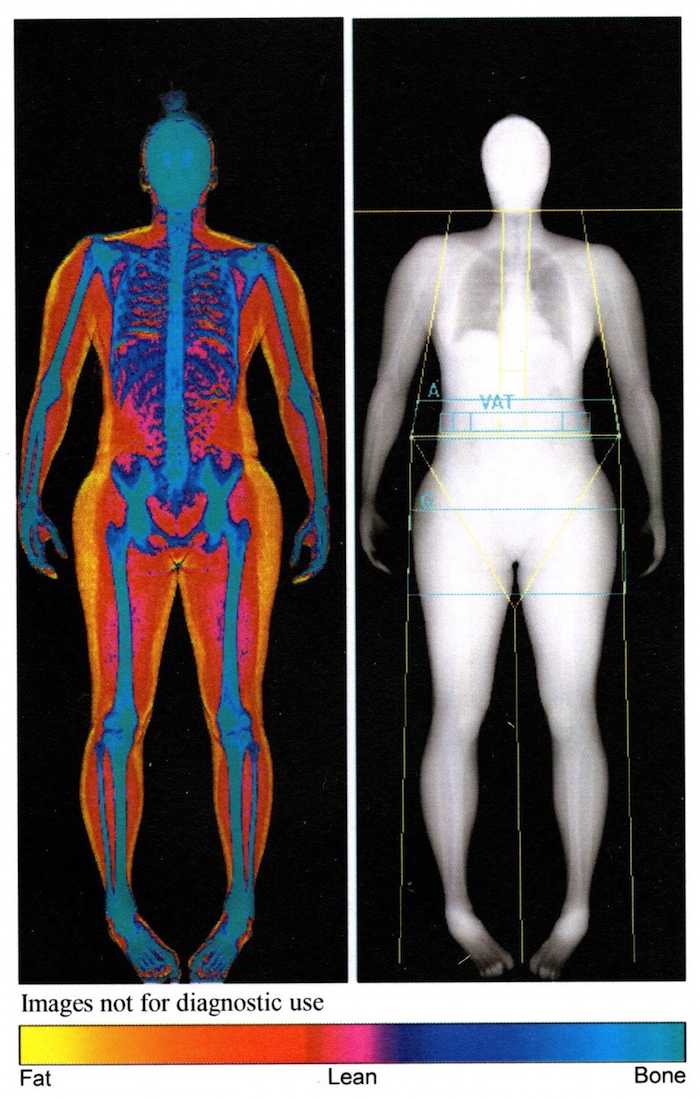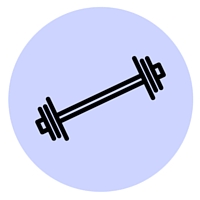What Your Body Composition Test Isn’t Telling You: A DEXA Scan Review
/Disclosure: I received this test free of charge in exchange for my blog review and community education. All opinions, test results, photos, and content are my own. Huge thank you to the Mandis Agency and Iowa Ortho for their generosity and support of this blog!
Body composition testing—I know you’ve heard of it. Chances are you’ve probably gotten yours tested at some point in your life, whether it was using water displacement for sports in high school, a bio-impedance scale at your gym, or caliper testing at home or with your doctor. There are MANY options to choose from when you want to test your body composition and all are beneficial. The most common approach I see in the fitness world is either calipers or bio-impedance scales. Calipers, unless used by a trained professional, can result in significant differences between tests (not to mention, who wants to pinch their skin to measure their body fat? Talk about making you feel bad about yourself…). Bio-impedance scales (BIA) are certainly easier and can give you a general idea of body fat percentage (BF%), lean muscle mass, hydration status, etc. However, the BIA is heavily dependent on time of day, hydration, and electrolyte status to name a few confounds. So how can you accurately and reliably measure your body’s make up? Enter: The DEXA Scan.
What is it? Will it hurt? What’s the procedure like?
The DEXA scan (Dual-Energy X-Ray Absorptiometry) was originally developed in the 1980s to measure bone density in the aging population. Now, in addition to bone density, it is used to measure subcutaneous and visceral adipose tissue (surface layer body fat and fat around internal organs, respectively) and lean muscle mass distribution. It is the gold standard in body composition testing. Why? Well, for one, it’s the most reproducible body composition test out there. Also, hydration, electrolytes, proximity to a workout, etc. have no bearing on the results. (Insert raise-the-roof emoji here… and cry-laughing emoji… k, side bar: there need to be emojis for bloggers.) Not to mention, unlike a bio-impedance scale that will give you an overall reading of body composition, a DEXA scan tells you exactly where you’re holding fatty tissue and muscle, down to each arm, leg, and foot.
Now, let me assure you, although these images look like they’re very medically-oriented, the DEXA scan does not hurt, and you don’t have to do anything other than lie still on a table. The orthopedic clinic I went to had me undress and wear one of those oh-so-stylish hospital gowns (insert cry-laughing emoji again, haha). They also taped my feet together to keep my legs from rotating outward (pretty sure that’s common practice for the scans). After that, you lie on the table and it slowly glides you back and forth under the scanner. It’s not noisy at all and you cannot feel anything other than the table moving. It’s a painless procedure that lasts all of 4 minutes. Note, though, that lying still means no talking either. I definitely tried to have a conversation with the nurse while this was going on and she promptly shut me up. HAH.
The Results (and yes, these are mine).
Above is the full report you receive once the scan is done. In the spirit of full transparency, I wanted to post my individual report here instead of the generic sample report from Jane Doe. I always keep it honest on the blog, and this is my way of showing you all you don’t need to be ashamed of your body, whatever your numbers are. Yep, I’ve definitely gained some weight in recent years (upwards of 20lbs). I used to be somewhat ashamed of that, but honestly, I’m really not concerned with it anymore. I’m more interested in how my body functions and feels. That said, let’s look at this more in depth.
Body Images and Composition Chart
Below are a zoomed in look at the images of my body and the composition results chart. The images, as you can see, are of the different types of mass (left) and ratio of fat to area of the body (right). In the left image, you can visually understand your body composition. No bio-impedance scale, water displacement tank, or caliper can do that! (For reference, blue = bone; red = muscle; yellow = fat.)
Now here’s the interesting part. This chart gives you the exact distribution of fat, lean muscle, and bone mineral content (BMC) per body area. So cool! So, for example, my left arm has 2.20lb of fat and 5.51lb of combined lean muscle and bone. The fat percentile columns are a comparison of your body to “young normal range” (YN—a large group of 20-30 year olds), and age-matched (AM—people your specific age). The lower the number, the better (for reference, they go from 1-100).
The other chart pictured in the first full image is a list of different fat ratios throughout my body. These are important because certain ratios can indicate a higher risk for obesity, increased risk for cardiovascular disease, and other health complications. For example, % Fat Trunk / % Fat Legs is a ratio of how much adipose tissue you have in your trunk (abdomen, back, chest) versus your legs. The ideal ratio for women is below 0.8, and below 1.0 for men. The higher the ratio, the higher percentage of fat you likely hold in your trunk, which can be a risk factor for certain heart and pulmonary conditions.
The Takeaways and Cost
So what does one make of all this? It’s a lot of information thrown at you all at once! I’ll admit, even though I understood some of it on my own, without a professional explanation, I wouldn’t have been able to make sense of the more detailed results. The main take-home point here is to use this as a tool to reliably measure your body composition across time. I’d suggest getting multiple scans done—once as a baseline measure, and then again maybe a few months into a new fitness routine or healthier way of eating to track your progress.
The cost of this test will depend on where you are and what clinic/orthopedic facility you go to. For those local to Iowa, Iowa Ortho does the DEXA scan for $39.99. Insurance does not usually cover them, so they are typically an out of pocket expense, but are very affordable. For more info, and to check your local DEXA provider, go to their website here.
Readers: chat with me! Have you heard of a DEXA scan before? Have you ever had one done? If not, are you interested in doing one? Do you track your body composition in other ways? How’s your Monday going?

































